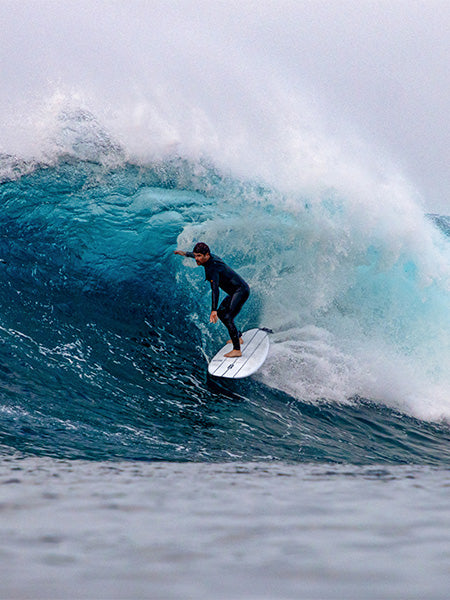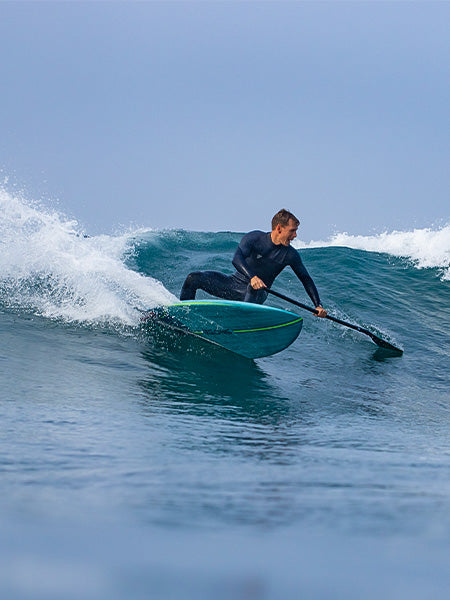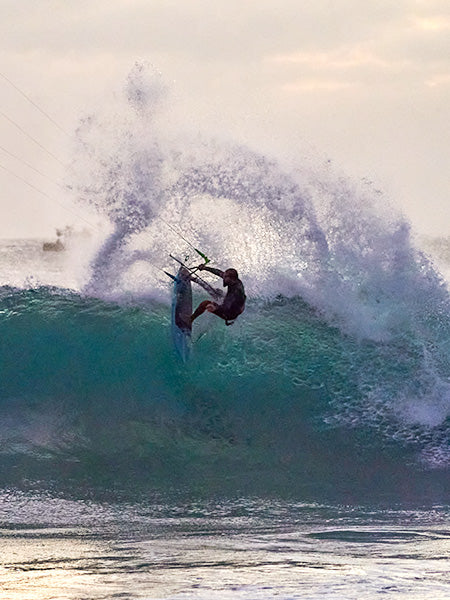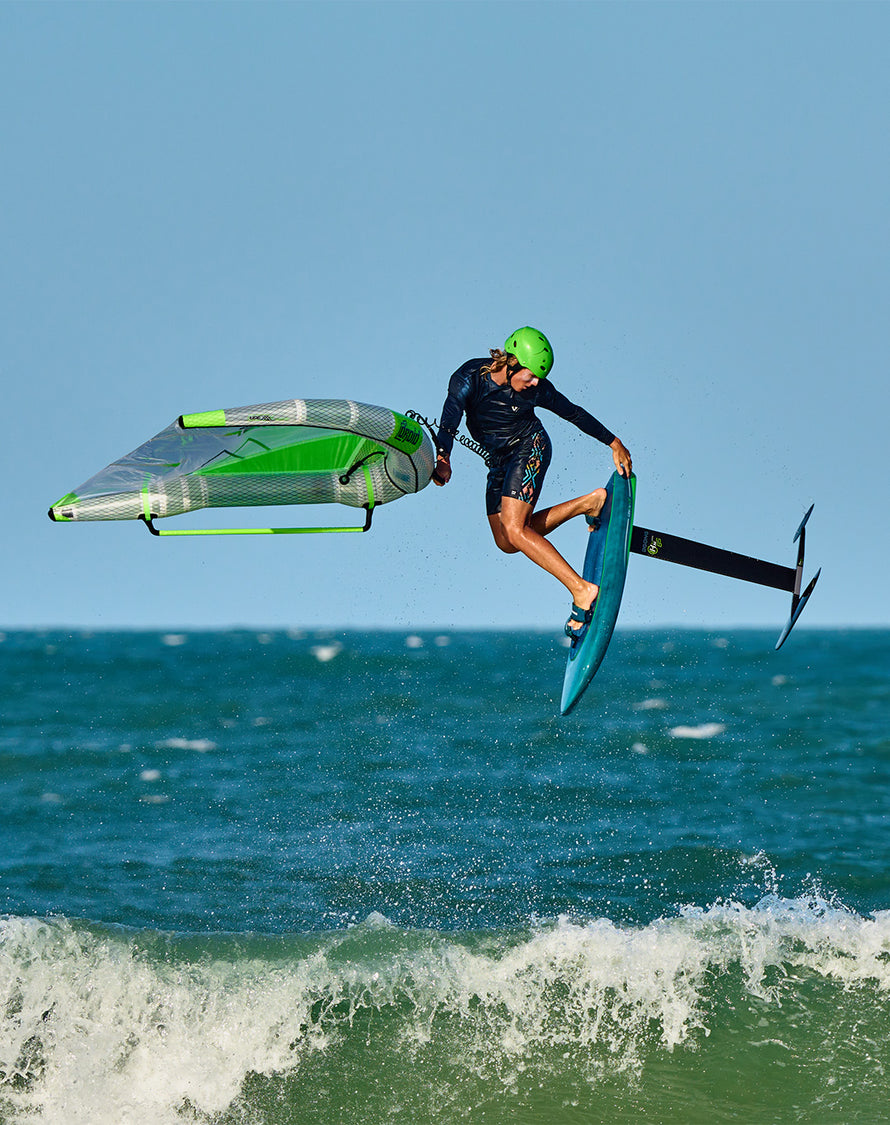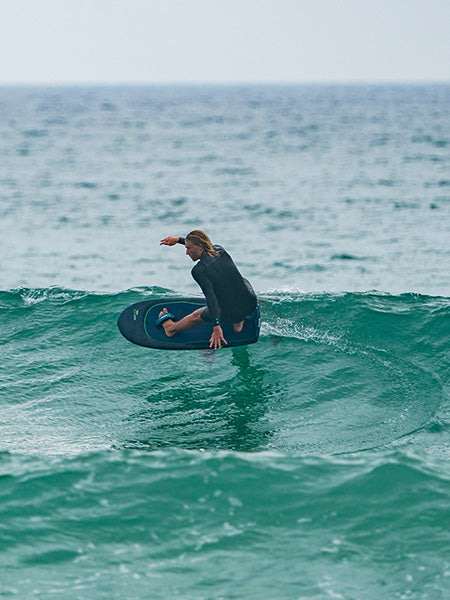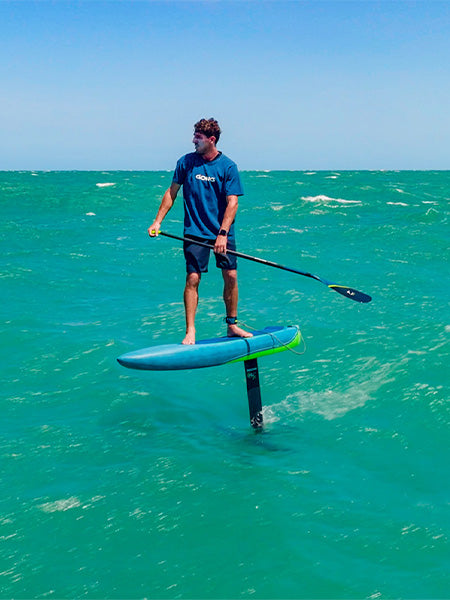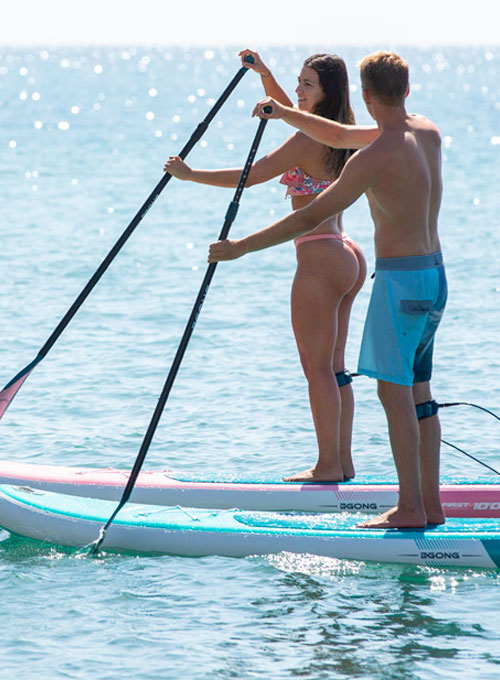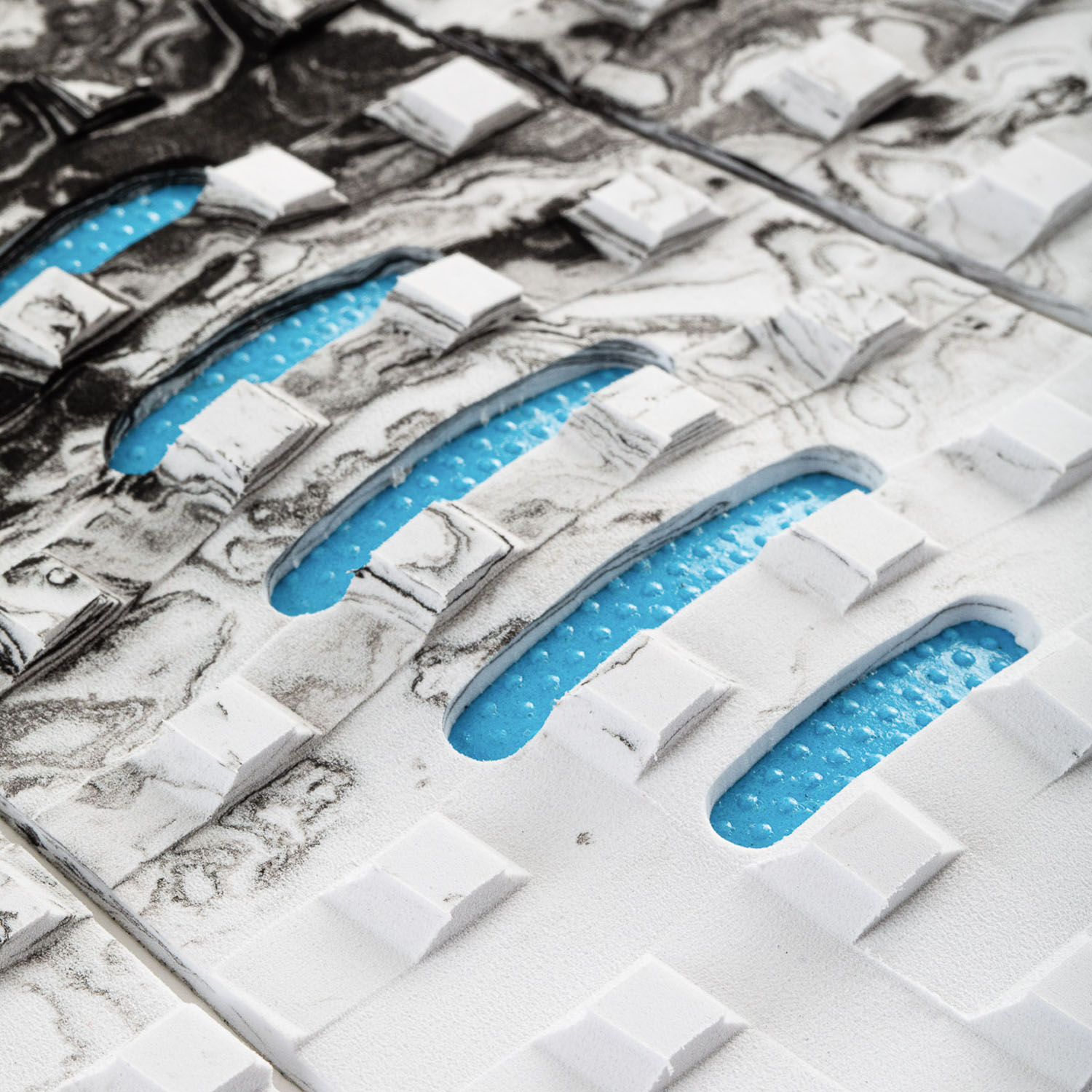GEAR: TAIL PAD
Back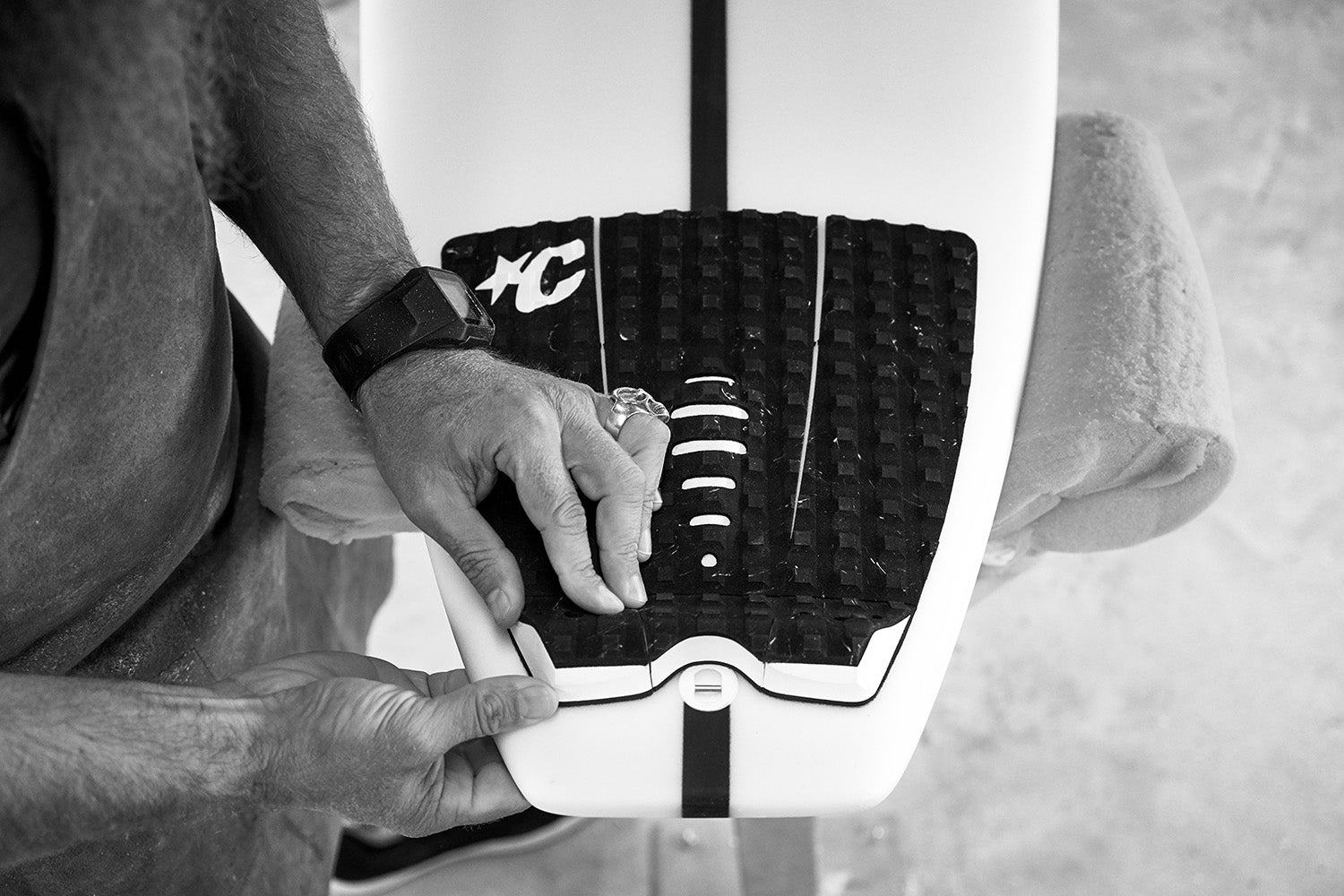
Get a tail pad with your surfboard. Whether you’re a beginner or an expert, here’s why should equip yourself ?

The pad is a necessary item for every type of board. Also called “surf grip”, it’s made to place your back foot just above the fins, to fully commit in the curves, to go for big turns, to protect the board while you’re duck diving… Self-adhesive, it must be positionned in the right place!
What is a pad?
Pads were first used in the ‘70s, notably thanks to two board sports legends: Tom Morey (bodyboarding inventor) and Herbie Fletcher (yes, the famous dad of Christian Fletcher who made aerial surfing popular). Morey and Fletcher senior contributed to a great extent to the use of pads worldwide.
So, the pad quickly became essential on a surfboard. Seemingly quite “simple”, its construction requires some knowledge : It is made of EVA foam with a self-adhesive side.
The pad allows a better grip, so you don’t have to worry about your foot slipping in a committed turn. It is soft for your wetsuit, protects the board from hits and limits your wax consumption! Many models differ by their sizes, their shapes, their textures…

Pad or no pad ?
Whether you’ll get a pad or not is often an esthetical choice. But a pad isn’t only a good looking accessory, it’s an essential help.
If surfing is all about positioning, then you need to place your feet at the right place. What could be better for that than a sensory mark to let you know that you are “on the sweet spot for this turn”.
Whether you’re an expert or a beginner, it will be useful. For a beginner, it allows you to know exactly where to place your back foot. It also grants you a landmark. And when you know that to get maximum maneuverability, the back foot needs to be placed just above the fins, a pad will firstly help you to engage curves.
For an expert, it’s the guarantee to push hard without slipping.
Different parts of a pad:
The Kick tail: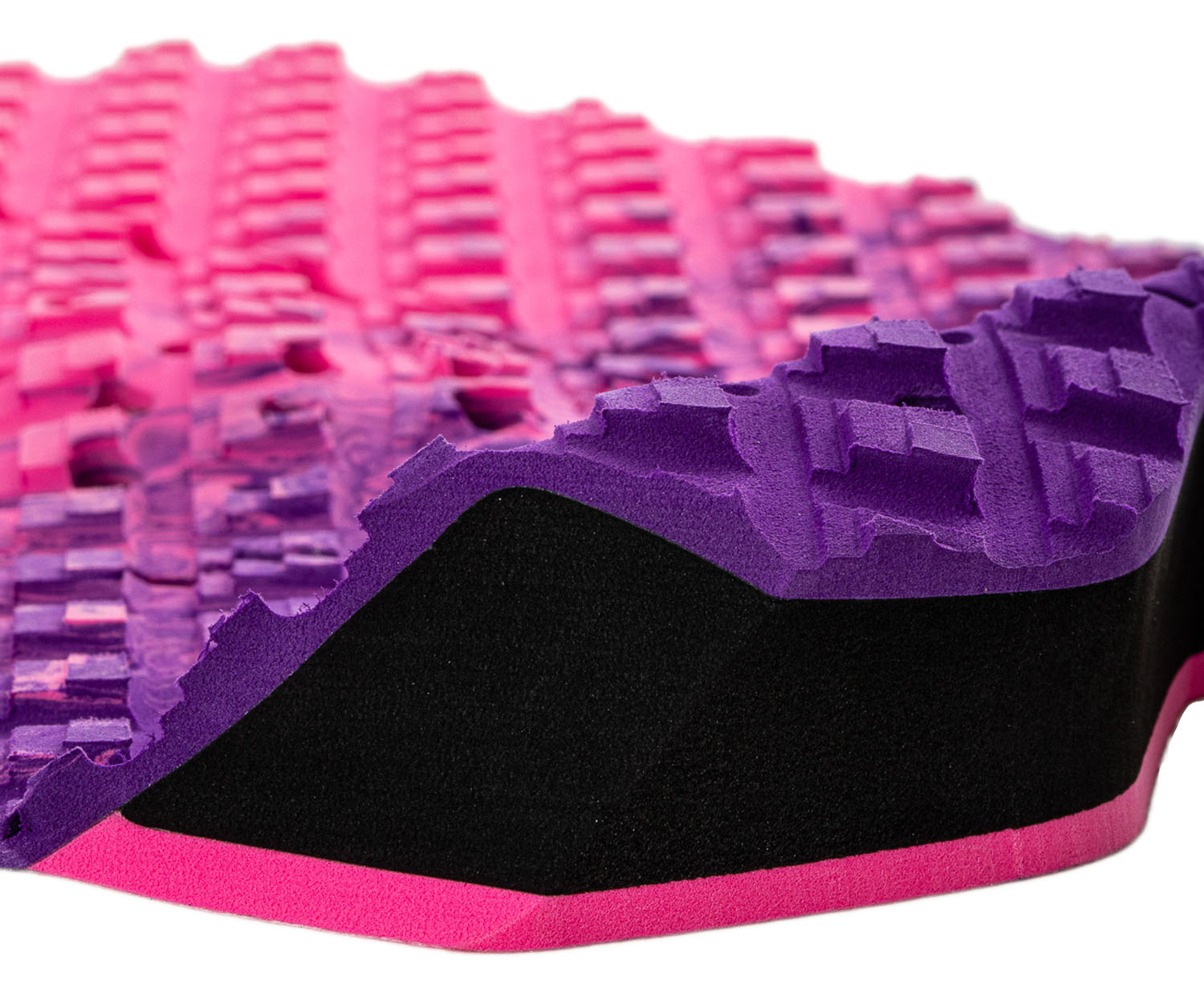 On a shortboard, it’s better to put a tail pad on your board. With this kind of board, you need to press hard on your back foot. It brings verticality to your turns.
On a shortboard, it’s better to put a tail pad on your board. With this kind of board, you need to press hard on your back foot. It brings verticality to your turns.
Raising part of the pad (the closest part to the tail), the kick tail grants you to better wedge your foot (during maneuvers or duck dives). The foot being “wedged”, there is no risk to see your foot slip during a turn.
The higher the kick tail, the more you can wedge your foot and put pressure on the back. So, if you want to engage your maneuvers, go for a higher kick tail.
The Arch bar :Central part of the pad, the arch bar is usually a bit thicker than the side parts. It’s another foothold and mark for your back foot.
The arch bar takes the shape of the arch of your foot. So, the foot is perfectly wedged for more comfort, more grip and it offers a better landmark.
Some pads are flat because they have no arch bar. It’s only a matter of comfort, either you like it or not!
Pads in different parts:
Adjust the choice of your pad to suit the tail of your board shape’s (square tail, squash tail, swallow tail, round tail). Both go hand in hand! A non-adjusted tail pad will limit you.
Pads are sometimes cut into several parts (the arch bar and the side parts are separated in three parts) to adjust to the tail’s shape.
A pad separated in several parts (two, three, or even four) gives more margin and, therefore, to adjust to larger tails. A pad in one and only part is perfect for boards with narrow tails.
Different pads textures:
There are two major group of pads textures:
- “Soft”, “Skinny”… these pads fully smooth have several names depending on brands. They are not tough for feet but bring a lot of grip.

- “Warp”, “grooving”, “diamond”… this group displays more relief than the first one. The grip is even more important because the pad’s surface is irregular.
Where and how to install it?
First of all, stick your pad on a new board! It’s a contact adhesive, the pad will stick to a clean and smooth surface, therefore, you need to put a lot of pressure during the sticking! It’s essential. When a board has already been waxed, it’s really annoying: it will always remain greasy. So, in that case, prepare the zippo fuel to clean it up.
Once it’s clean, be sure to stick the pad at the right place: right in front of the leash plug! Once it’s done, stick the arch bar first. Then, stick the side parts one by one. At each step, put a strong pressure on your pad to stick it well.
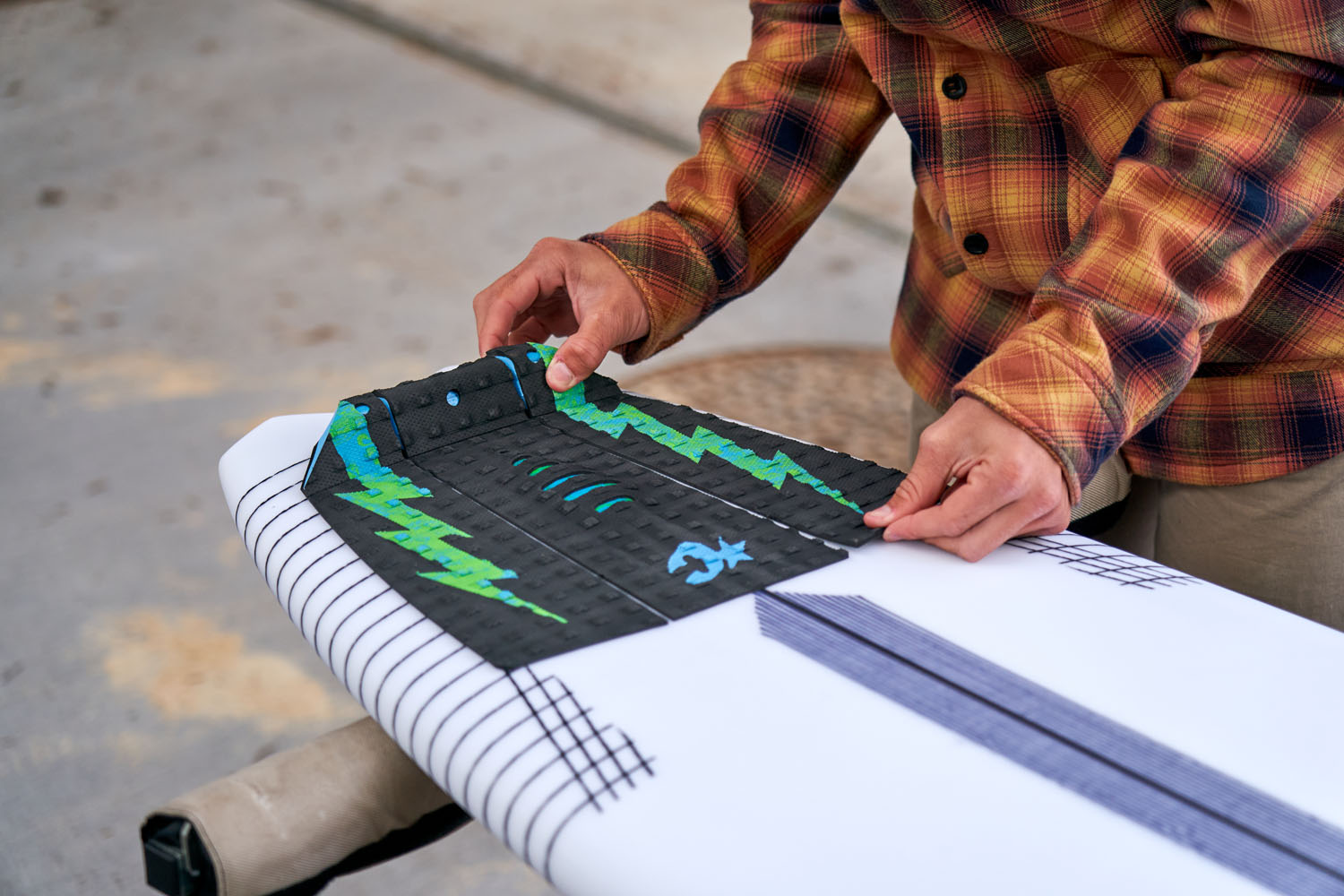
And for the front pad?
Still marginal five years ago, it’s becoming an essential accessory with the aerial surfing trend. A front pad is placed at the middle of a board, where you take support with your front foot. It’s less known that the tail pad but it’s extremely useful when you want to have an optimal grip. The front pad shows its potential during aerial tricks or huge weight transfers, and mainly grants the use of less wax!
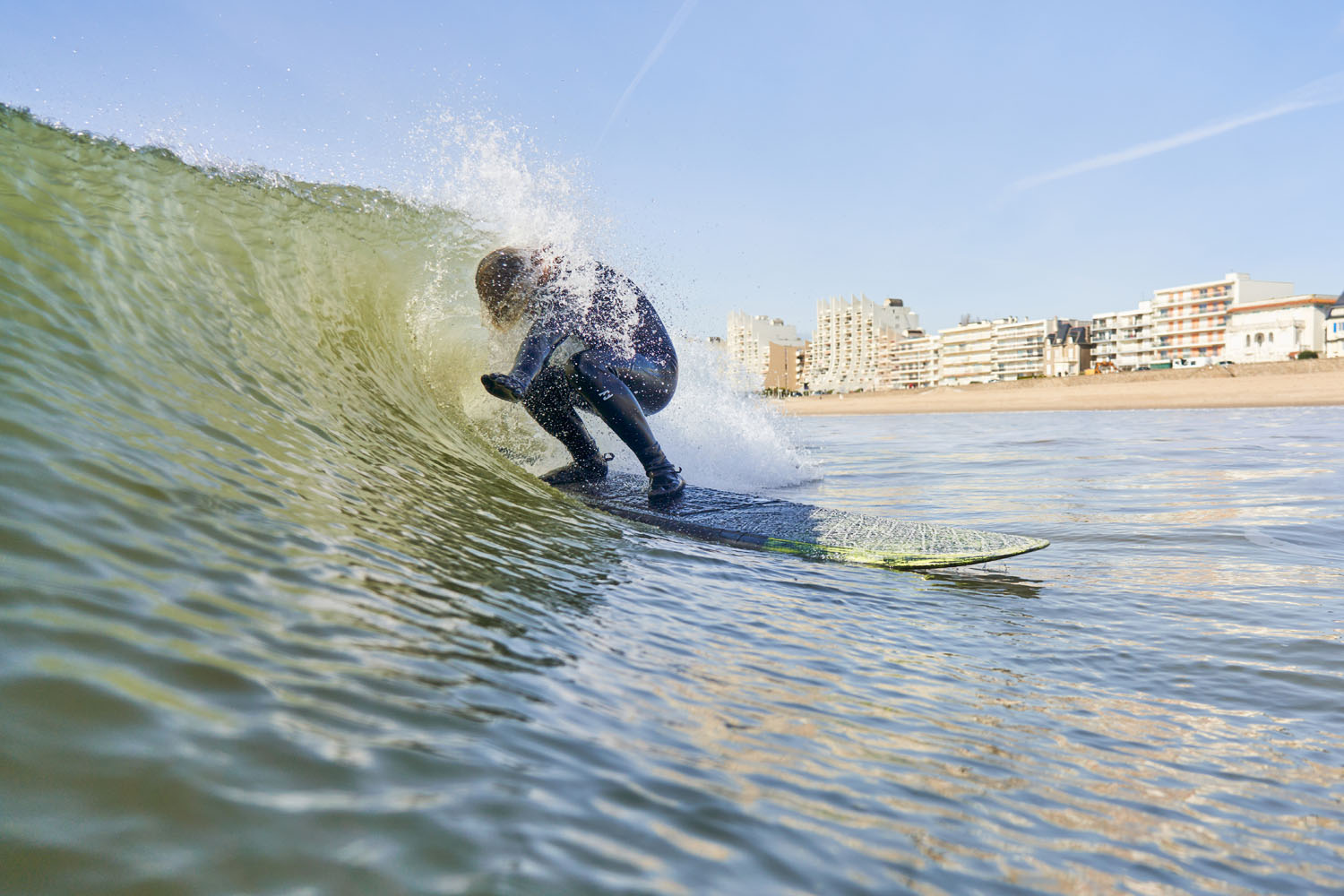
Where to place it? It’s kinda simple since it’s long. Generally, we consider that the sweet spot of the front foot is located between the back third and the center of the front pad. Because during tricks, you will tend to move forward, either in landings or while tubing. However, your foot will never go back behind this sweet spot. It’s not surfable.
The tail pad is fixed, so place your back foot at the center of it and move your front foot until you’re comfortable. Generally, it’s located at the back third of the front pad. In fact, it’s easy to place it on a shortboard, so on a mid length, it’s at the same place. And you can place another one in front if you feel the need.
Shortboard, fish, longboard, which model?
- Shortboard: The tail pad of a shortboard is pretty narrow, especially at the kick tail. As for every pad, it adjusts to the board. The surfer’s back foot will not move a lot, it will be wedged on the pad.

- Retro/fish : Generally, with a retro board, we only make long turns. So the grip is a bit less useful. Sometimes, there is no kick tail for boards that have a fish tail. It will bother the glide and your evolution more than anything.
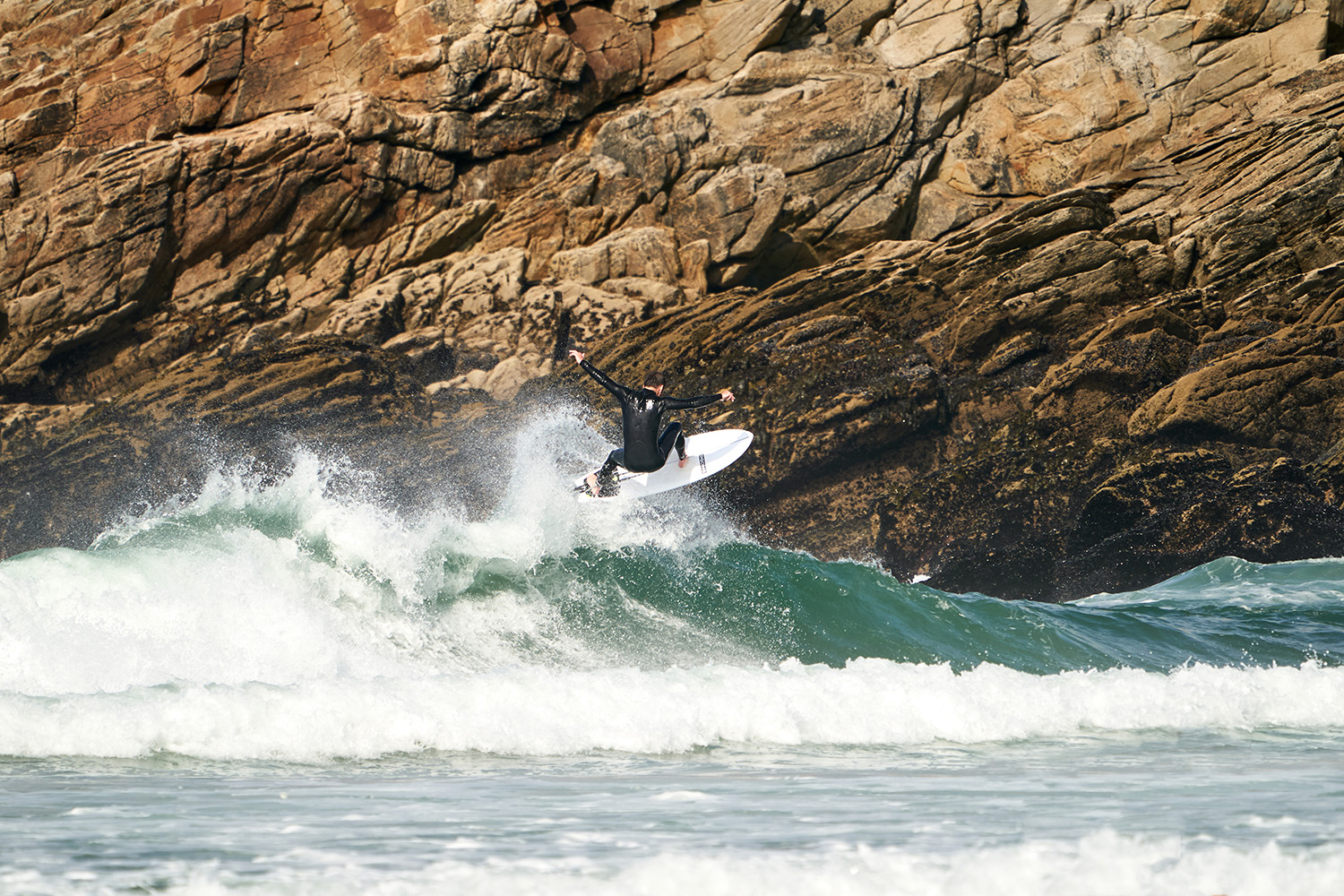
- Longboard : The tail is much larger and longer on a longboard. The surfer needs to move more, especially from side to side with cross-steps, so to have an adjusted tail pad is essential.
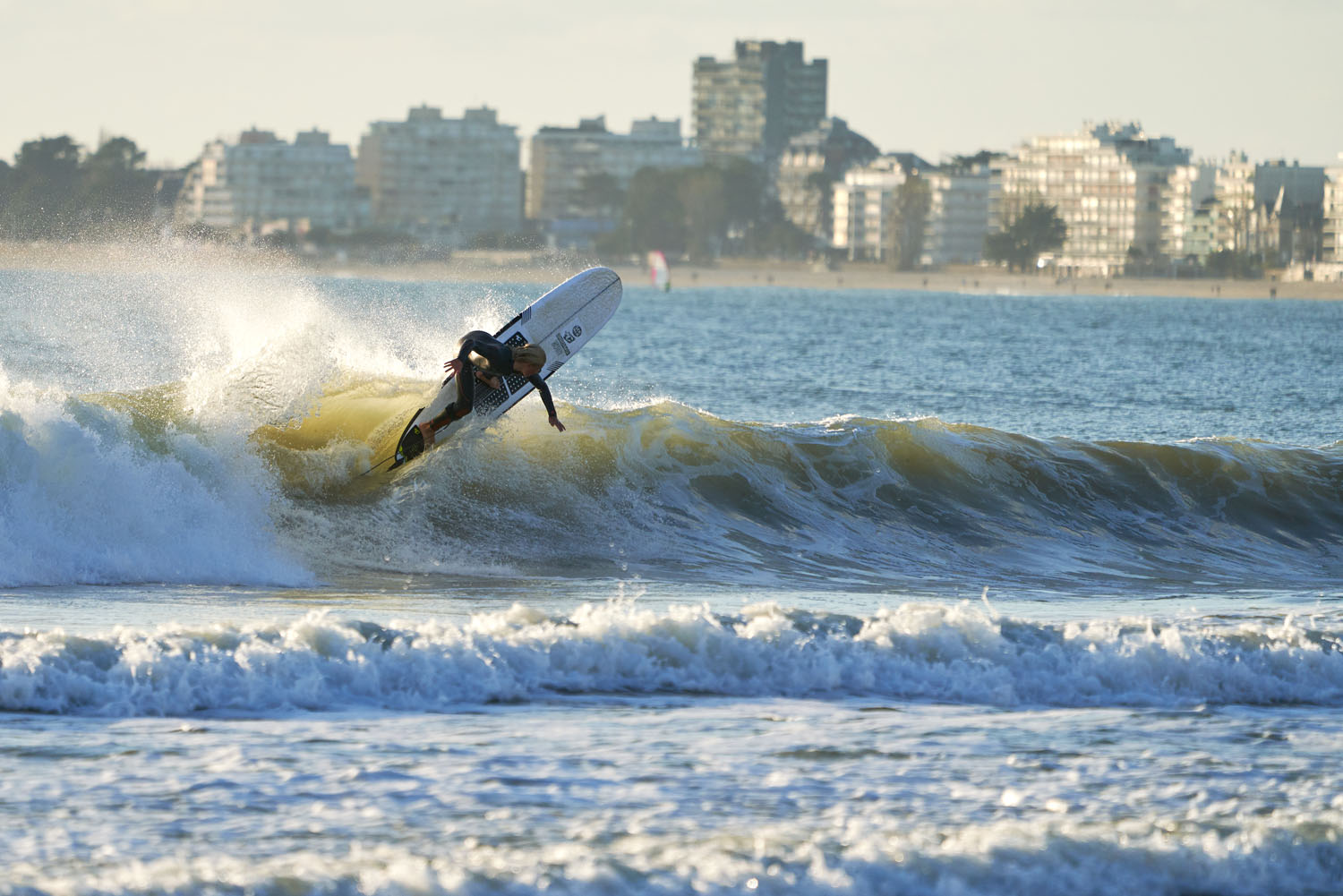
Looking after your pad:
Numerous rubs, salted water, sand, sun… A pad can remove itself, often on the tips. It’s not a problem if you take care of it quickly, a drop of strong glue solves the problem.
If it’s too late, no worries, a pad can be removed and replaced!
